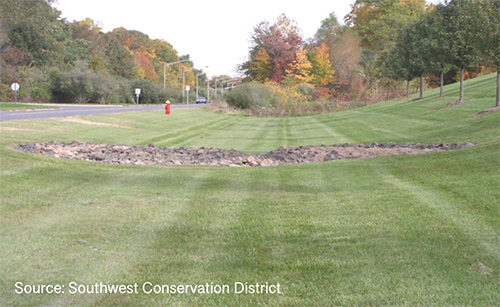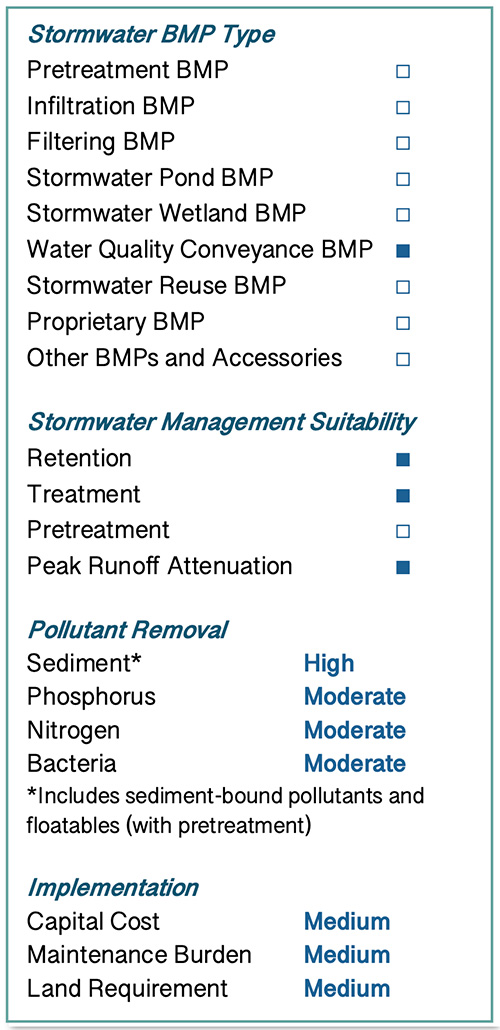Water quality swales are shallow vegetated open channels designed to treat and convey stormwater runoff. Water quality swales provide higher pollutant removal than traditional grass drainage channels, which are designed strictly for conveyance.
Dry water quality swales (also referred to as “dry swales”) have a bioretention soil media below the surface of the swale that facilitates stormwater filtration and vegetative growth. Dry swales are frequently designed to infiltrate but can be designed with an underdrain to capture filtered water and assist with drainage from the system. In certain situations, bioretention swales can also be designed with impermeable liners to prevent infiltration into the underlying soil. Dry swales are planted with dense, native grasses or plants that function to slow the flow of runoff and encourage filtration. The use of check dams is recommended to enhance water quality performance by promoting ponding, filtration, and infiltration of stormwater into the underlying soil. Pollutants are removed through sedimentation, filtration, adsorption, pollutant uptake, and infiltration.
If not designed with an impermeable liner, dry water quality swales can provide retention of stormwater and reduce runoff volumes through infiltration and groundwater recharge. Dry swales may also be used to provide stormwater quantity control when designed as on-line facilities.

